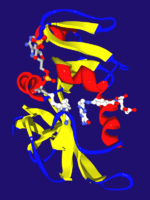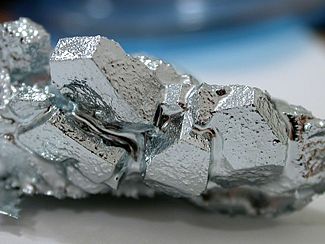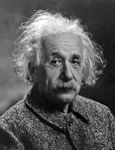Portal:Science
2008/9 Schools Wikipedia Selection. Related subjects: Portals; Science

Scientists maintain that scientific investigation must adhere to the scientific method, a process for properly developing and evaluating natural explanations for observable phenomena based on empirical study and independent verification. Science, therefore, avoids supernatural explanations until all other natural possibilities have been considered, and rejects arguments from authority.
Fields of science are commonly classified along two major lines: Natural sciences, which study natural phenomena; and Social sciences, which study human behaviour and societies. Whether mathematics is a science is a matter of perspective.
Fields of science can be further distinguished as pure science or applied science. Pure science is principally involved with the discovery of new truths with less (or no) regard to their applications. Applied science is principally involved with the application of existing knowledge in new ways.
Enzymes are molecules that manipulate other molecules — the enzymes' substrates. These target molecules bind to an enzyme's active site and are transformed into products through a series of steps known as the enzymatic mechanism. Some enzymes bind multiple substrates and/or release multiple products, such as a protease cleaving one protein substrate into two polypeptide products. Others join substrates together, such as DNA polymerase linking a nucleotide to DNA. Although these mechanisms are often a complex series of steps, there is typically one rate-determining step that determines the overall kinetics. This rate-determining step may be a chemical reaction or a conformational change of the enzyme or substrates, such as those involved in the release of product(s) from the enzyme.
Gallium ( IPA: /ˈgaliəm/) is a chemical element that has the symbol Ga and atomic number 31. A rare, soft silvery metallic poor metal, gallium is a brittle solid at low temperatures but liquefies slightly above room temperature and will melt in the hand. It occurs in trace amounts in bauxite and zinc ores. An important application is in the compound gallium arsenide, used as a semiconductor, most notably in light-emitting diodes (LEDs).
Among his many investigations were: capillary action, his special theory of relativity which stemmed from an attempt to reconcile the laws of mechanics with the laws of the electromagnetic field, his general theory of relativity which extended the principle of relativity to include gravitation, relativistic cosmology, critical opalescence, classical problems of statistical mechanics and problems in which they were merged with quantum theory, including an explanation of Brownian motion; atomic transition probabilities, the probabilistic interpretation of quantum theory, the quantum theory of a monatomic gas, the thermal properties of light with a low radiation density which laid the foundation of the photon theory of light, the theory of radiation, including stimulated emission; the construction of a unified field theory, and the geometrization of physics.
- ...that the endangered golden lion tamarin (pictured) has a long, but not prehensile, tail?
- ...that the Witch's hat is the common name of a colourful orange-red toadstool?
- ...that Grandi's series 1 − 1 + 1 − 1 + • • • is divergent and appears to equal 0, yet in some sense "sums" to 1⁄2 — a paradox once linked to the creation ex nihilo of the universe?
- ...that Derek Freeman was an anthropologist whose refutation of Margaret Mead's work "ignited controversy of a scale, visibility, and ferocity never before seen in anthropology"?
- ...that the New Year's Eve snowstorm of 1963/1964 dropped over 17 inches of snow at Huntsville, Alabama, simultaneously setting new snowfall records for any day, week, or month in their history?



